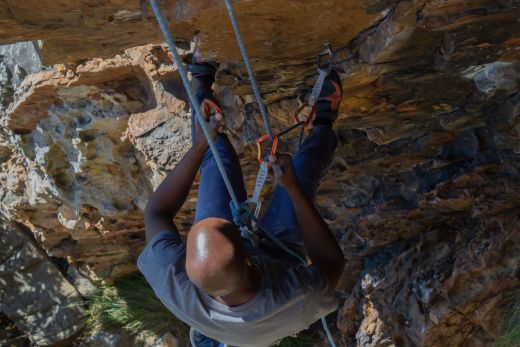So, you’ve just sent your first project and it’s time to head back to camp. The only thing left to do is get your gear off the wall. But how exactly do that on a wall that is so overhung? That is question that this article will answer. In the paragraphs that follow, you will learn two methods for getting your draws off a steep route as well as a few other tips and tricks that can make projecting and gear retrieval a little easier.
Cleaning gear while lowering
On less steep routes, it is possible to retrieve your quickdraws while lowering off. However, to keep yourself close enough to the wall to be able to reach your quickdraws, you will need to clip yourself to the belayer’s strand of a rope using a spare quickdraw (a technique know as tramming). When doing this, make sure that the bolt-end carabiner of the quickdraw is clipped to your belay loop and that the rope-end biner is clipped to the rope. This ensure that you don’t run your rope through a carabiner scarred with burrs, something that can put extra wear on it.
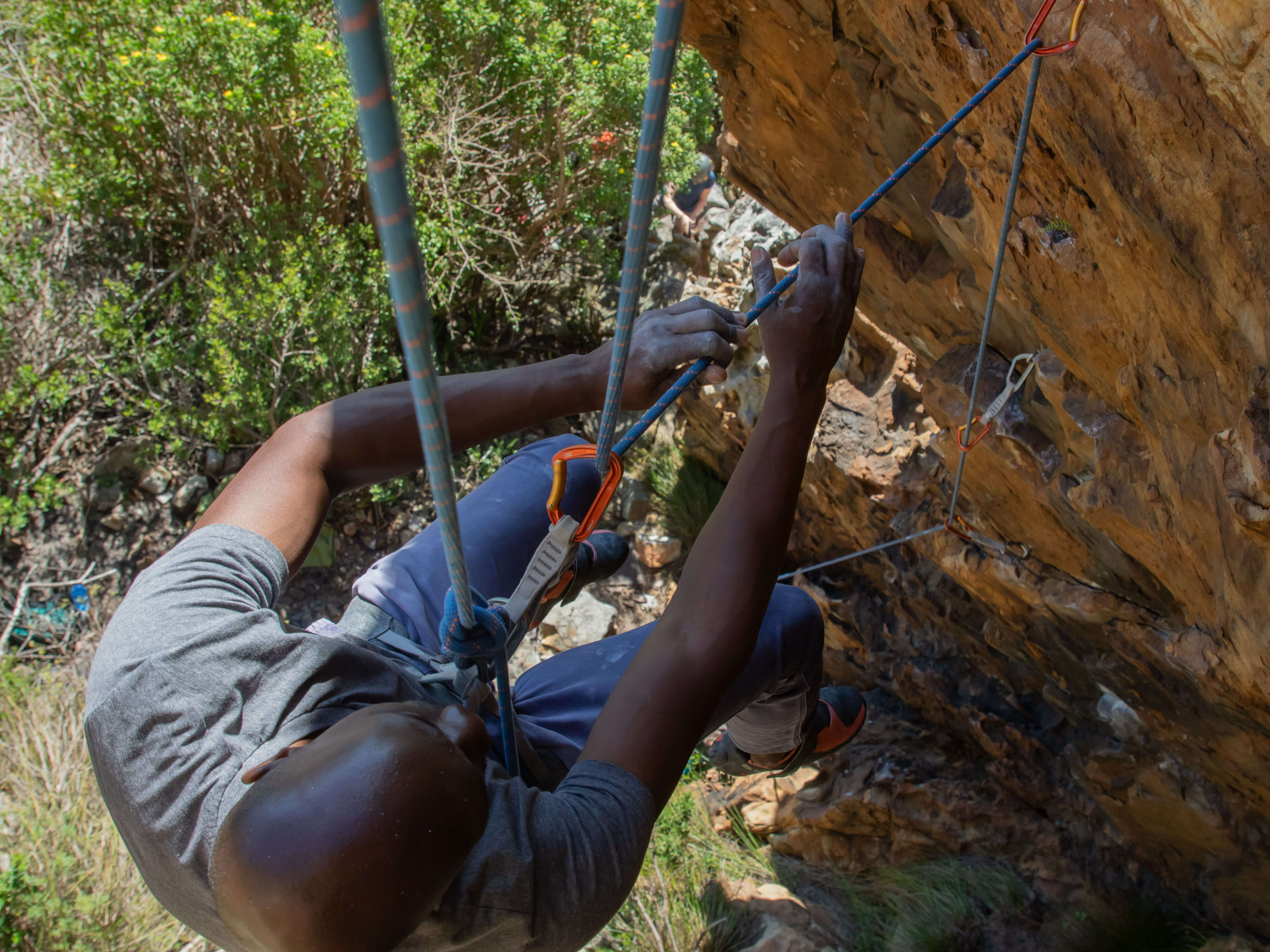
When tramming, you will need to pull yourself towards each quickdraw as you approach it. On steeper sections, the best way to do this is to hang horizontally in your harness with your back to the ground, and pull yourself head first towards the wall. Just be careful to not knock your head on the wall as you near it. When you reach a quickdraw, I recommend first unclipping the quickdraw from the bolt. If you unclipped the rope from the quickdraw first, you could swing out of reach of the quickdraw if you let go.
Unclipping the bottom quickdraw
To ensure a safe touchdown, you have to unclip yourself from the belayer’s strand (tram) before you unclip the last quickdraw. If you don’t, you will pull the belayer with you when you swing out. This is dangerous, especially for the belayers, who can be dragged over and into objects on the ground. Always unclip the quickdraw connecting you to the climbers strand before unclipping the rope from the last quickdraw.
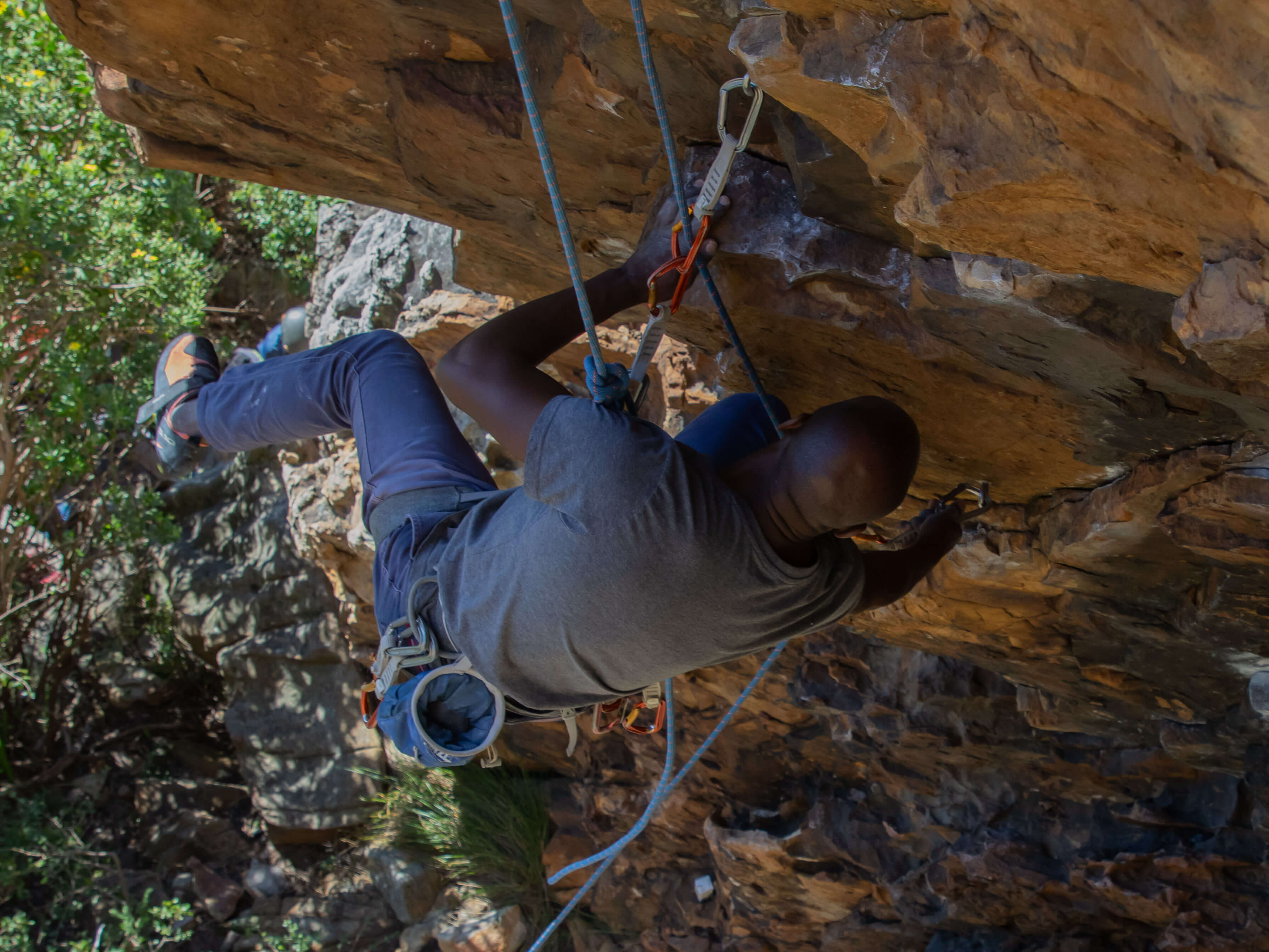
Where possible, many climbers prefer to unclip the bottom draw while they are still on the second draw. There are two reasons, you might want to do this. Firstly, it is often safer to swing out from the second draw (higher up) than the first. Secondly, it is sometimes easier to unclip the bottom draw from above, especially if there isn’t much in the way of decent holds to hang onto at the bottom bolt.
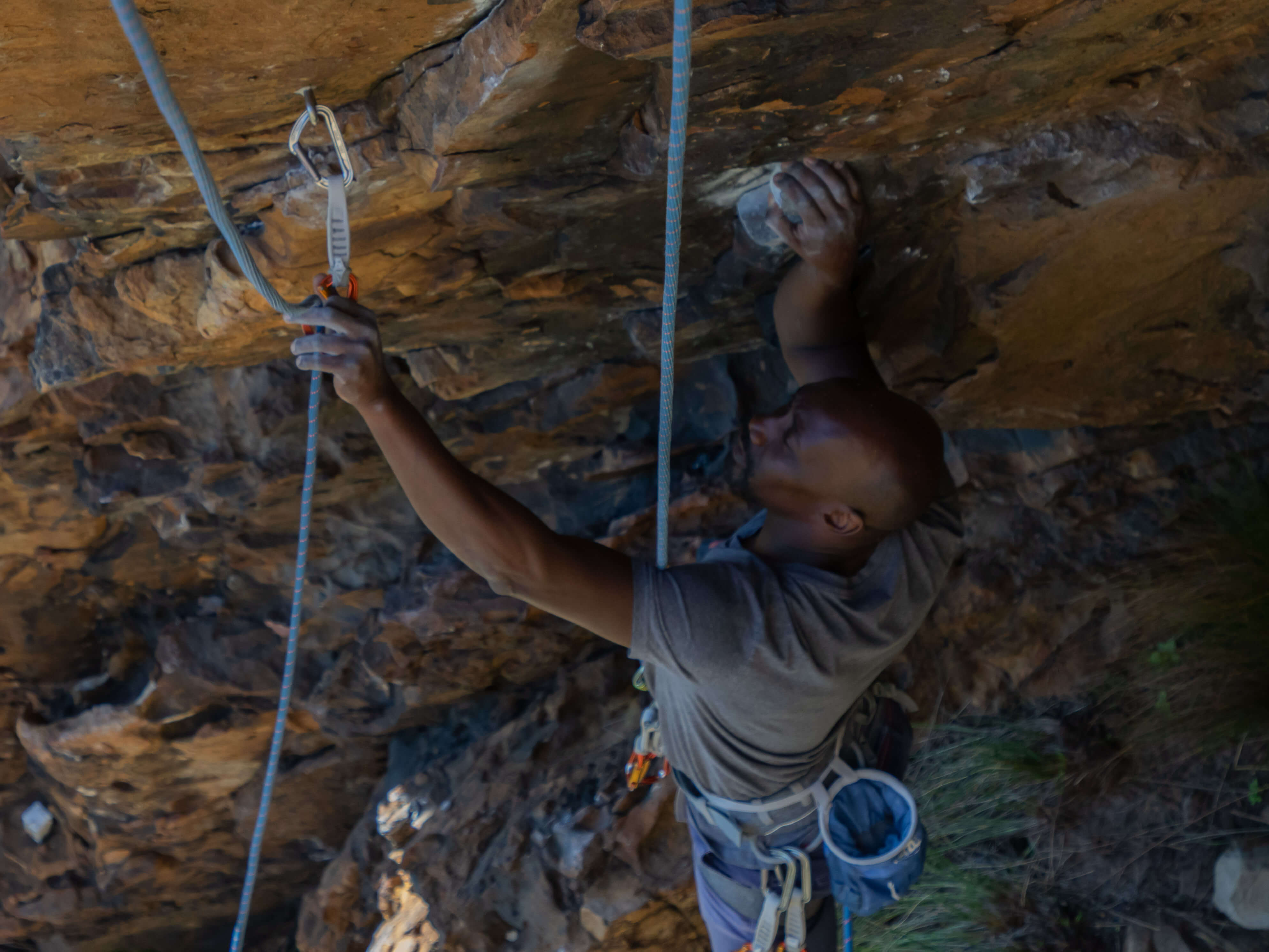
In some cases the best strategy is to to clip yourself directly into the second bolt so that you can take your weight off the rope and make the bottom quickdraw easier to unclip. Alternatively, you can also leave the last quickdraw clipped, lower to the ground, and then retrieve it from the ground. This tactic is best reserved for routes where the first bolt is low down and not difficult to climb down from.
Back climbing to clean gear off a route
On the steepest routes, the only way to get your quickdraws off the wall is to back climb the route. This essentially involves climbing the route on top rope but on the end of the rope that passes through the quickdraws, which you remove as you ascend. The advantage of this technique is that the quickdraws above you limit the potential for a big swing. Just remember to NOT unclip the last two quickdraws when you get to the top anchors as such a mistake would leave you with no protection.
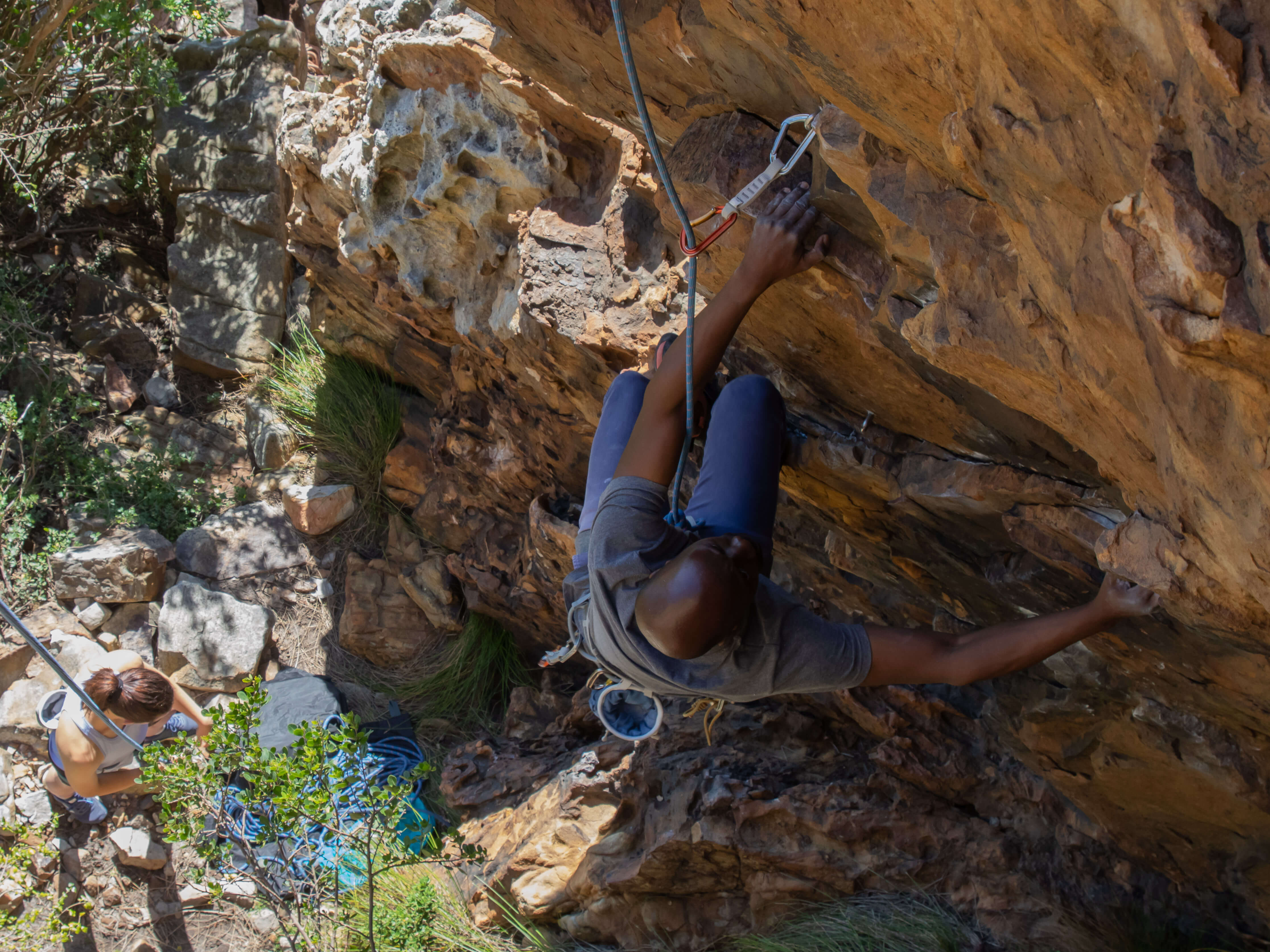
On steeper sections of a route, a fall can put a climber in space and out of reach of the wall. To avoid this situation, it’s best to take rests at bolts so that you have a better chance of making it to the next bolt. If you do fall off and find yourself dangling in space, you will have to boink to get back on the route. Yes, boink. This technique involves pulling yourself up on the rope, unweighting the rope, and allowing your belayer to quickly take in the slack – the norm is for the belayer to put all their weight on the rope. The rope captured in a single rep might only be several inches, but when performed repeatedly, the accumulated gains can get you within reach of the quickdraw.
Other tips and tricks
Beside knowing the two techniques described above, it can also be useful to know the following sport climbing tips and tricks.
Use a sling or quickdraw to aid off bolts that are difficult to unclip
Sometimes there are just no good holds near a bolt, which makes it difficult to clip a quickdraw and even more difficult to unclip it. If you have a sling on you, one solution is to run this through the bolt and pull on it, while unweighting and unclipping the quickdraw. The advantage of a sling as opposed over quickdraw is that a sling will slide straight out of the bolt as soon as you let one end go. A quickdraw, on the other hand, first has to be forced towards the bolt so that its nose can clear the bolt hole. Unless you don’t care about damaging a sling, I would only attempt this with a glue-in bolt.
Removing a quickdraw using a stick clip
Instead of climbing to retrieve a quickdraw from the ground – risky if it’s several meters up – you can also use a stick clip if you have one. Almost all stick clips have some kind of feature that allows them to be used to remove a quickdraw from a bolt. These all work a little differently but rely on the same basic mechanism which Involves using a loop of rope to lasso the carabiner and pull the carabiner gate inwards so that the quickdraw can be lifted off the bolt. This is how it is done with a BetaStick Evo.
Leaving the bottom quickdraw clipped
If you want to leave the rope clipped through the first quickdraw for the next climber, unclip the second and third quickdraw when you lower. When you pull the rope, it will fall the ground while leaving the first quickdraw still clipped.
Learn more
You now know how to get your quickdraws off a steep sport route. But don’t stop here. On this website you’ll find many more articles on everything from how to bail on a sport route to how to use redpoint tactics to crush longstanding projects. You can find these under the different sections in the categories menu, or, better yet, sign up for my newsletter to get all the latest from Trail & Crag delivered straight to your inbox.
